Salmon Loaf
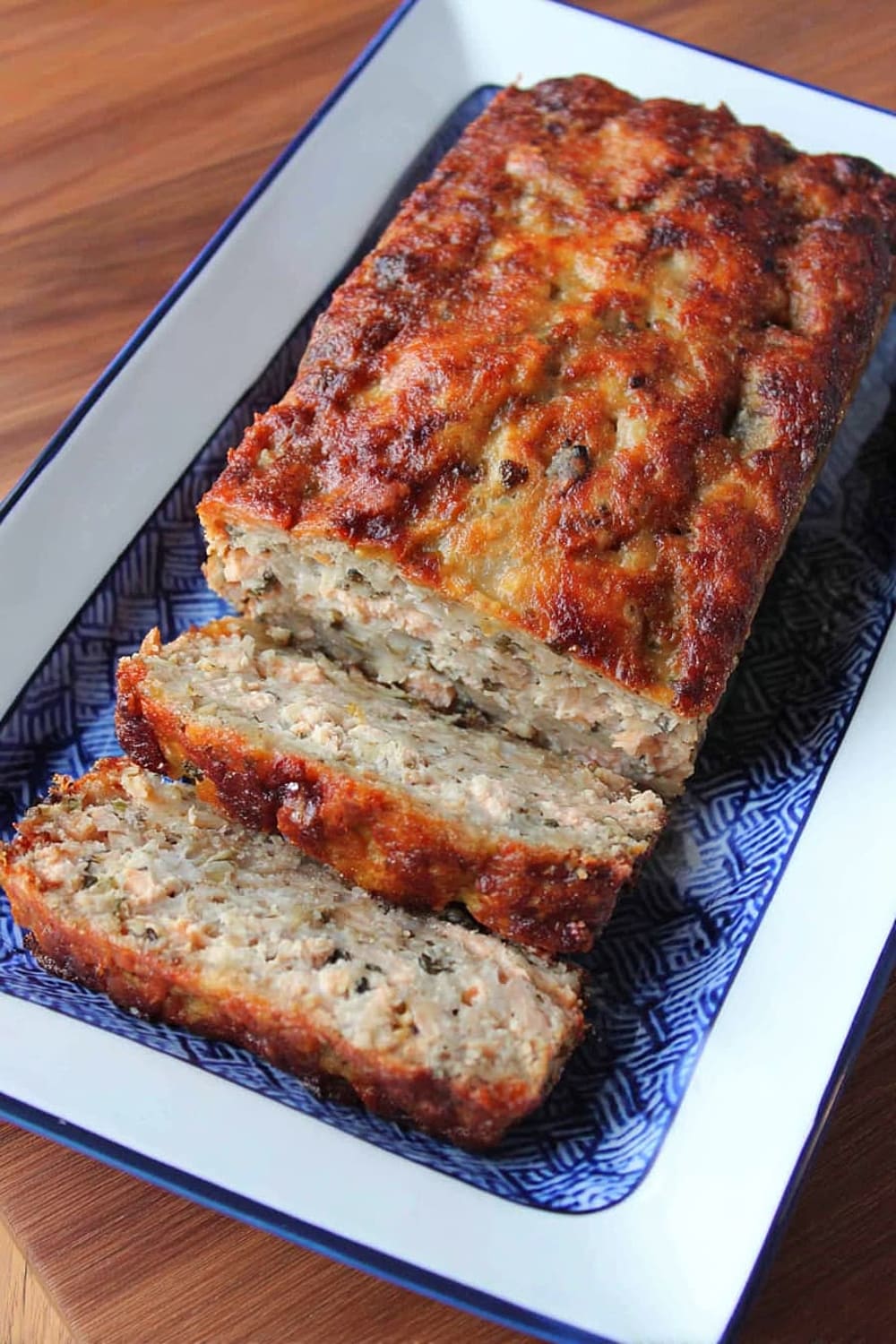
This salmon loaf is about to become your secret weapon for looking like you’ve mastered the art of comfort food without breaking a sweat.
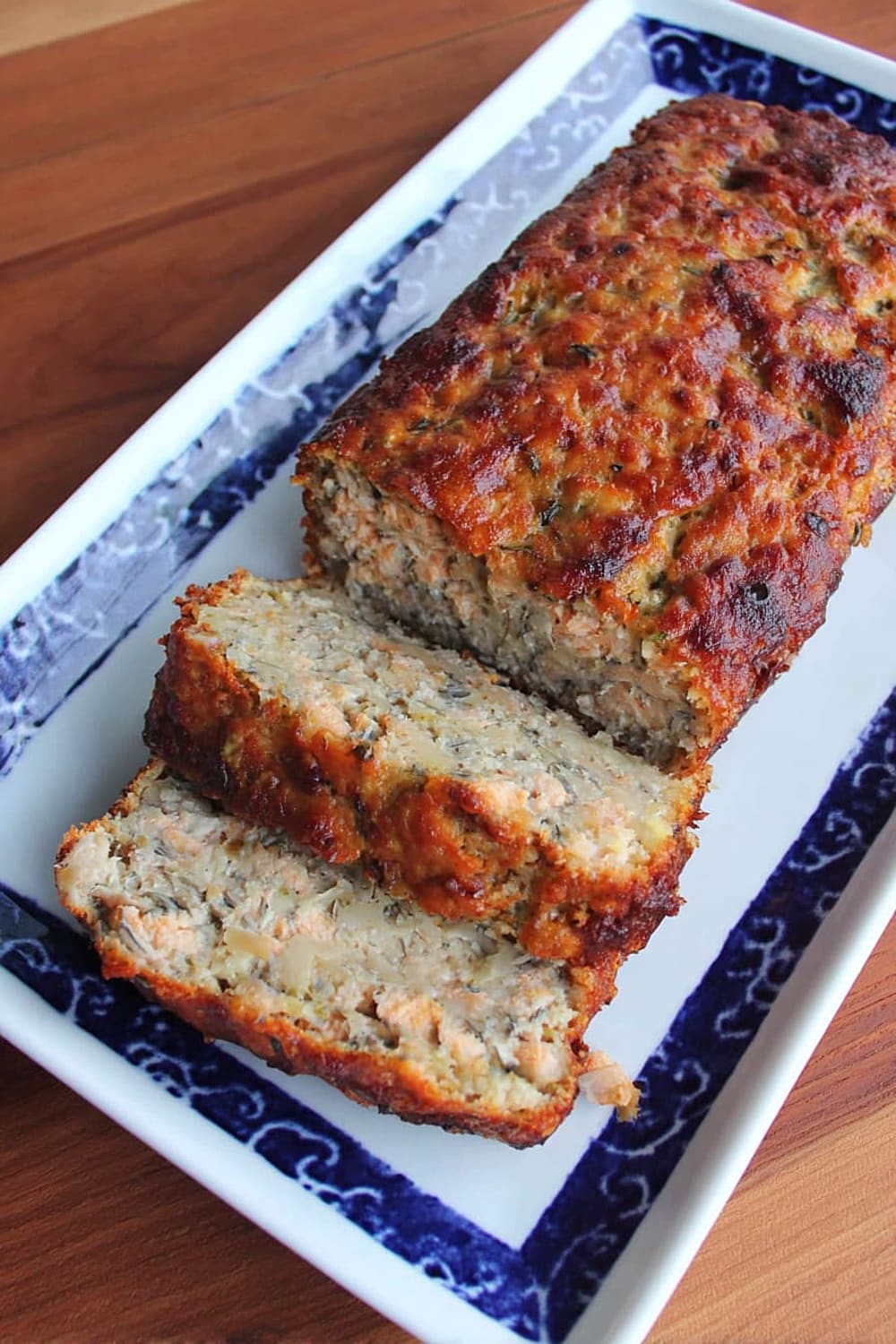
Picture this: flaky salmon combined with the perfect amount of crackers and seasonings, creating a loaf that’s somehow both nostalgic and surprisingly sophisticated.
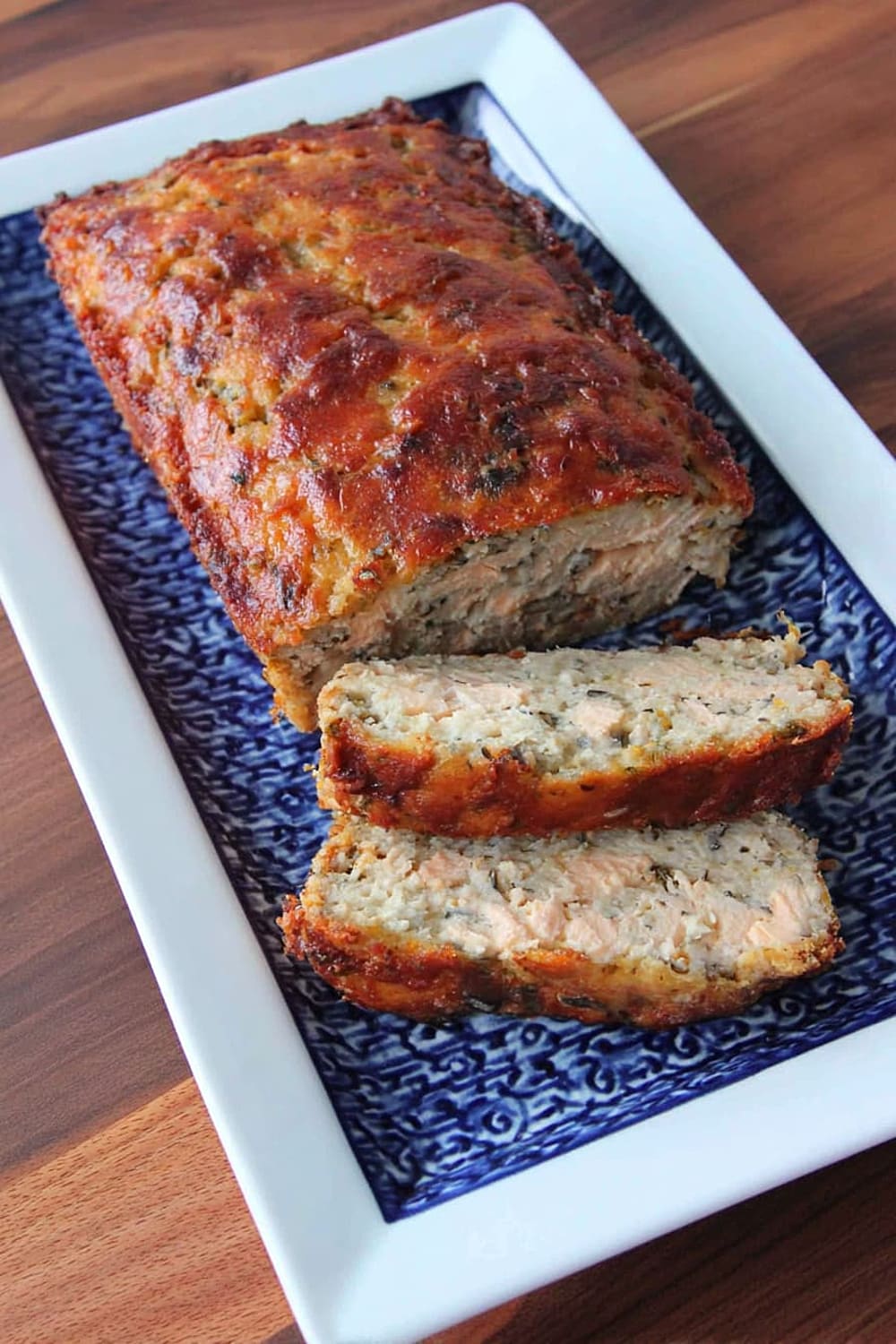
The beauty of this recipe lies in its simplicity – you literally dump everything into a bowl, mix it up, and let the oven do the heavy lifting while you pretend you’re a culinary genius.
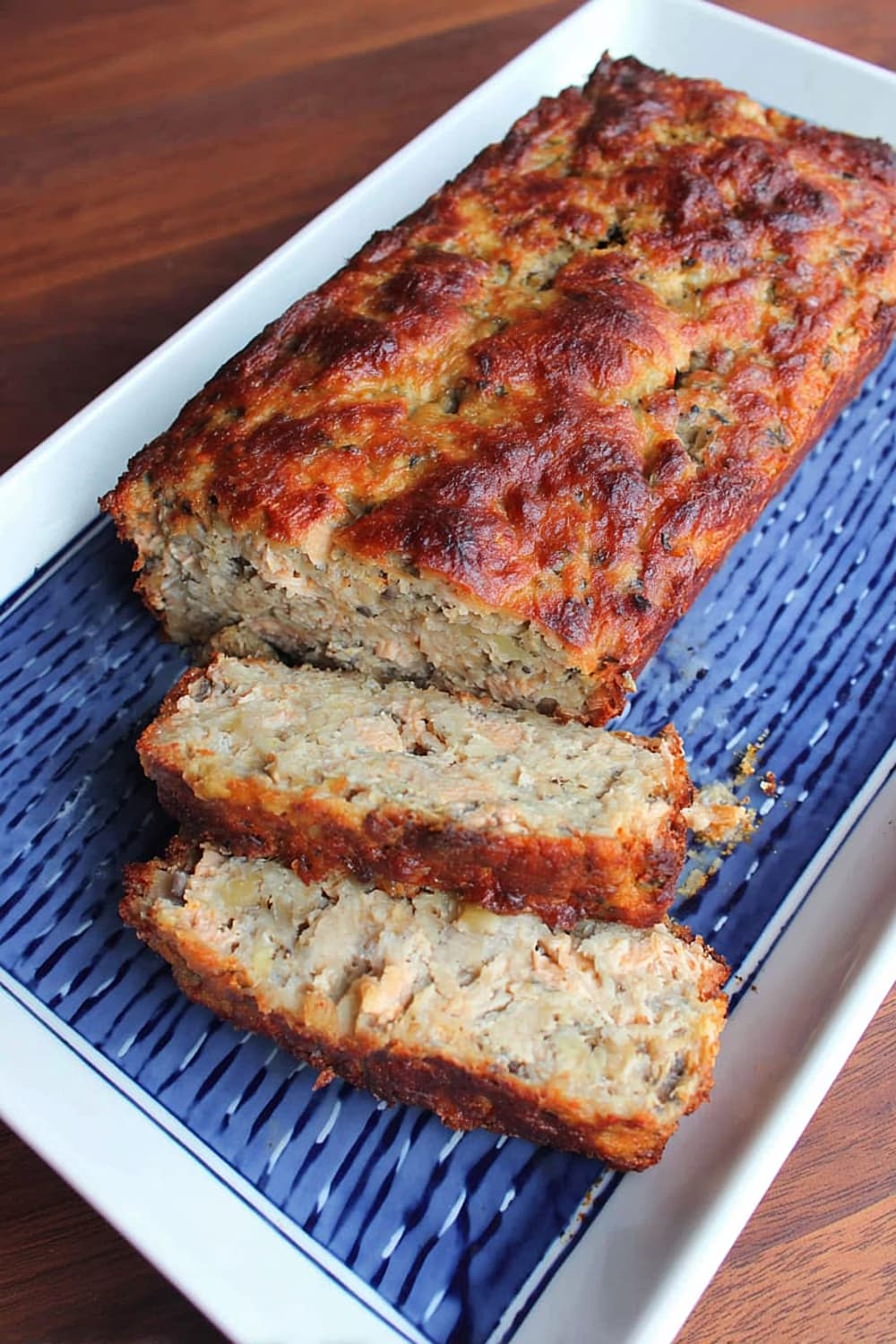
What makes this salmon loaf special is how the undrained canned salmon keeps everything incredibly moist, while the crushed saltine crackers provide just the right amount of texture and binding power.
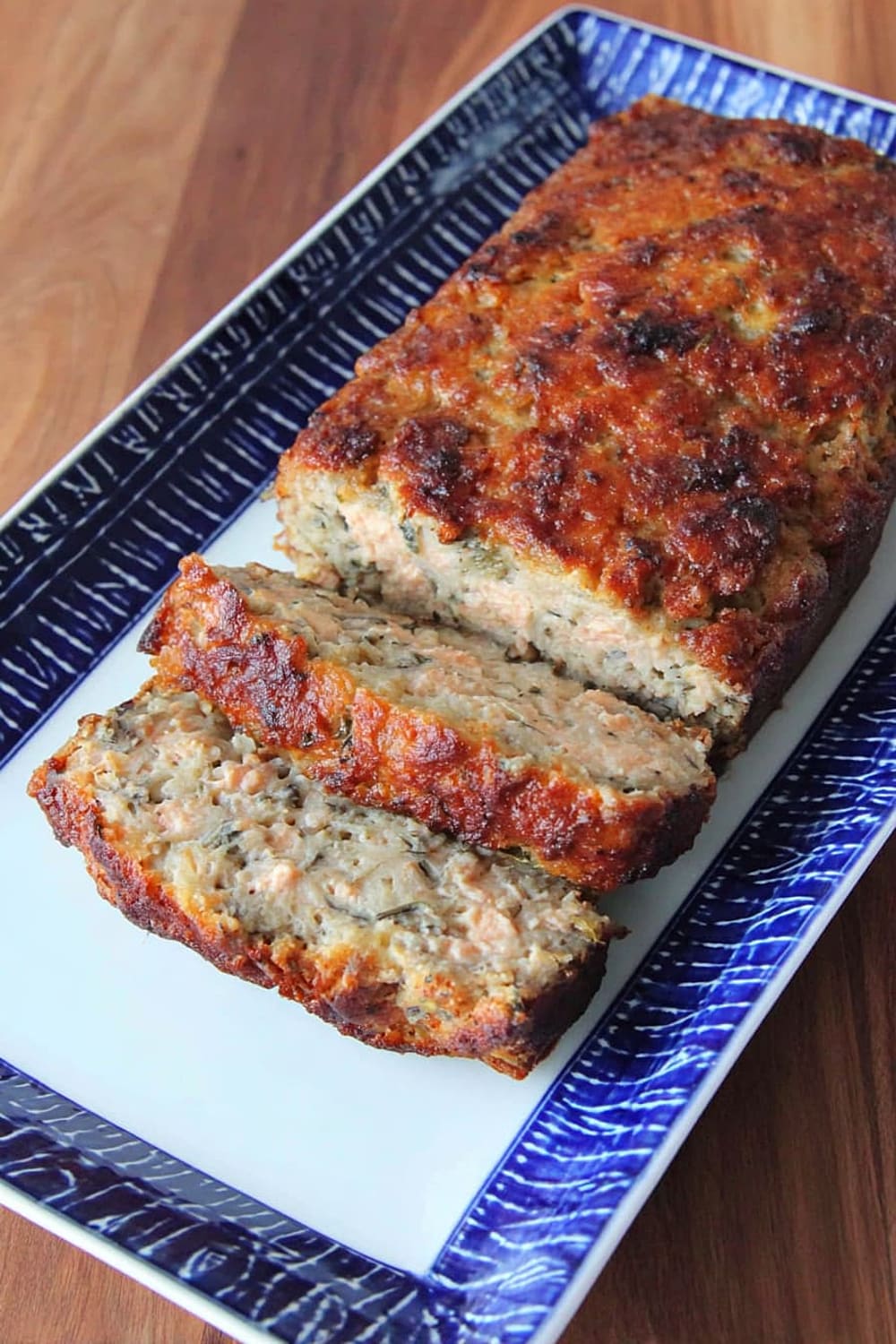
The aroma that fills your kitchen while this bakes is pure comfort food magic – that rich, savory scent that makes everyone suddenly appear in the kitchen asking “what’s cooking?”
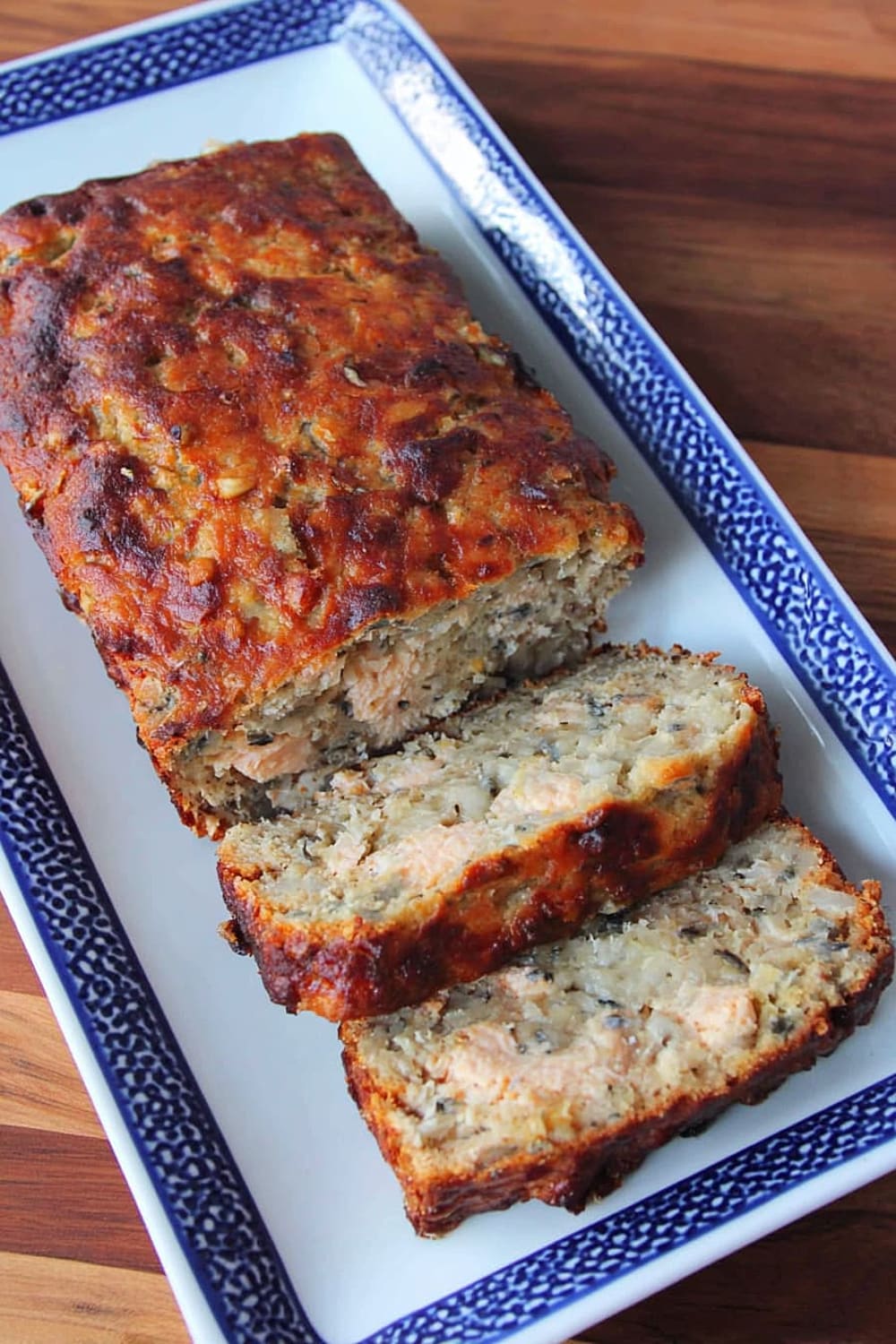
This is the kind of recipe that transforms a simple weeknight dinner into something that feels special, proving that sometimes the most humble ingredients create the most satisfying meals.
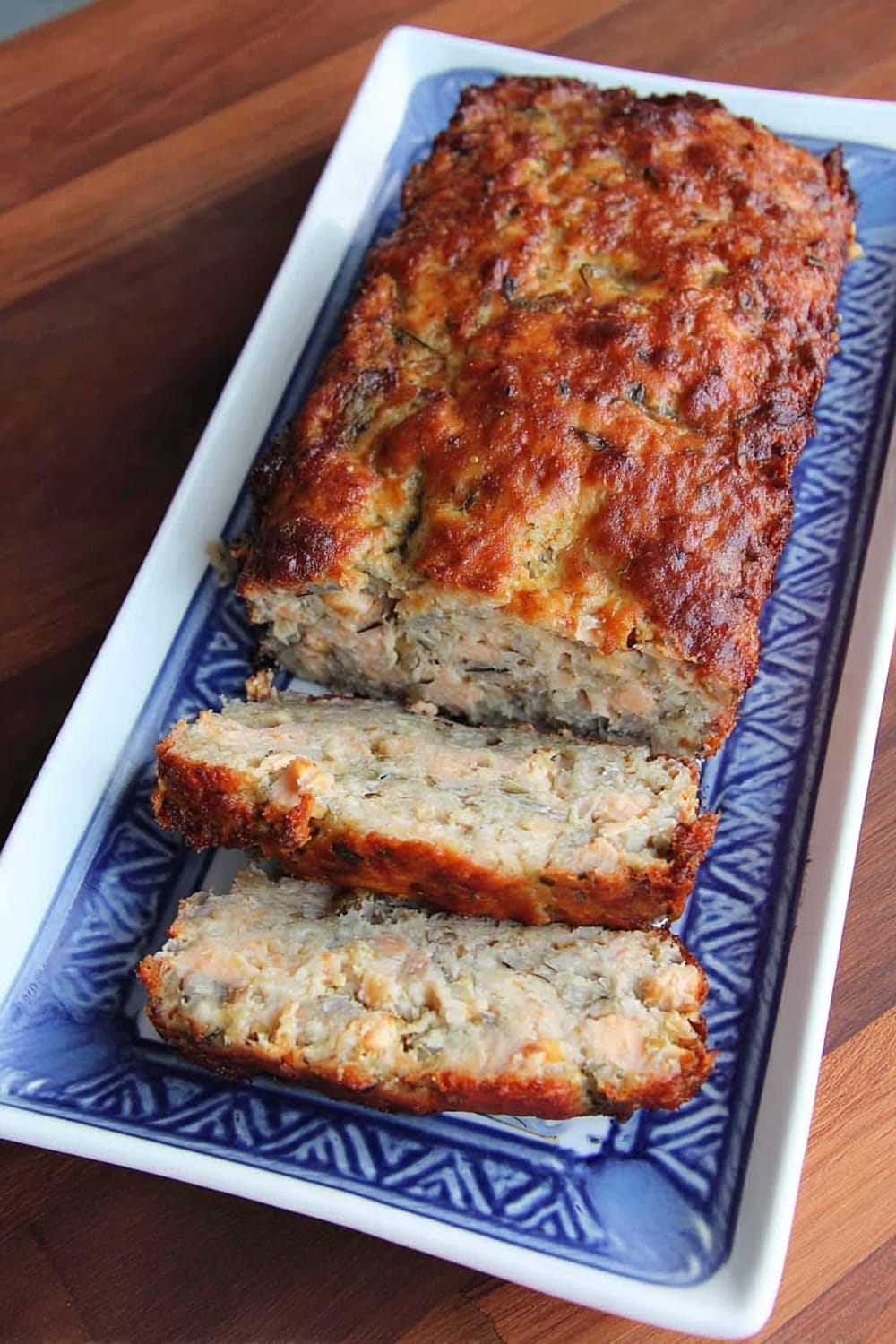
Ingredients
For the salmon loaf
- 1 (14.75 ounce) can salmon, undrained (the liquid is crucial for moisture)
- ½ cup crushed saltine crackers (about 15-20 crackers, finely crushed)
- ½ cup milk (whole milk preferred for richness)
- 1 large egg, beaten until smooth
- 2 tablespoons melted butter (cooled slightly)
- Salt and pepper to taste (start with ½ teaspoon salt, ¼ teaspoon pepper)
Instructions
Preparation
- 1 Preheat your oven to 350°F (175°C) and lightly grease a 9×5-inch loaf pan with butter or cooking spray. This prevents sticking and ensures easy removal once baked.
- 2 Crush the saltine crackers using a food processor, rolling pin, or by placing them in a sealed bag and crushing with a rolling pin until you have fine, uniform crumbs about the size of breadcrumbs.
Mixing the salmon loaf
- 3 Open the canned salmon without draining – the liquid contains valuable nutrients and keeps the loaf moist. Pour the entire contents into a large mixing bowl.
- 4 Break up any large salmon pieces using a fork, but don’t over-mix as you want some texture remaining. Remove any obvious bones or skin pieces if desired.
- 5 Add the crushed crackers, milk, beaten egg, and melted butter to the salmon. The melted butter should be cooled enough that it won’t cook the egg on contact.
- 6 Season with salt and pepper, starting conservatively since canned salmon already contains sodium. Mix everything thoroughly with a fork or wooden spoon until well combined but not overmixed.
Baking
- 7 Press the salmon mixture firmly into the prepared loaf pan, using the back of a spoon to ensure it’s evenly distributed and compact. This prevents air pockets that could cause the loaf to fall apart.
- 8 Bake for 45 minutes or until the top is golden brown and the center feels firm when gently pressed. An instant-read thermometer should read 145°F (63°C) in the center.
- 9 Let the loaf rest for 5-10 minutes before attempting to slice, allowing it to set up properly for clean cuts.
Recommended Equipment and Kitchen Tools
Essential Tools (for best results)
- 9×5-inch loaf pan – The standard size ensures proper cooking time and shape. A glass or metal pan works equally well
- Large mixing bowl – Gives you plenty of room to combine ingredients without making a mess
- Fork or wooden spoon – Perfect for breaking up salmon and mixing without overworking the mixture
- Measuring cups and spoons – Accuracy matters for the right texture and binding
Helpful Upgrades
- Kitchen scale – For more precise measurements, especially when crushing crackers to the right consistency
- Food processor – Makes quick work of crushing saltine crackers to uniform crumbs
- Instant-read thermometer – Takes the guesswork out of doneness, ensuring food safety
- Silicone spatula – Helps scrape every bit of mixture from the bowl into the pan
Nice-to-Have Options
- Parchment paper – Line the loaf pan for even easier removal and cleanup
- Wire cooling rack – Allows air circulation around the pan for more even cooling
- Bench scraper – Useful for transferring ingredients and keeping your workspace tidy
Recipe Variations and Dietary Modifications
Gluten-Free Adaptation
- Replace saltine crackers with gluten-free crackers or ¾ cup gluten-free breadcrumbs
- Crushed rice crackers work particularly well and maintain similar texture
- Add an extra 1 tablespoon milk if mixture seems too dry
- Baking time remains the same
Dairy-Free Modifications
- Substitute unsweetened almond milk or oat milk for regular milk
- Replace butter with olive oil or melted coconut oil (2 tablespoons)
- Coconut milk adds richness similar to dairy milk
Enhanced Flavor Variations
- Mediterranean style: Add 2 tablespoons fresh dill, 1 minced garlic clove, and 1 tablespoon lemon juice
- Smoky version: Include 1 teaspoon smoked paprika and 2 tablespoons chopped chives
- Classic comfort: Mix in 2 tablespoons finely diced onion and 1 tablespoon fresh parsley
- Spicy kick: Add ¼ teaspoon cayenne pepper and 1 tablespoon hot sauce
Texture Variations
- Chunky style: Leave larger pieces of salmon for more rustic texture
- Smooth version: Flake salmon very finely for uniform consistency
- Crunchy addition: Fold in ¼ cup finely diced celery for extra texture
Nutritional Information and Health Benefits
Key Nutritional Highlights
This salmon loaf provides approximately 280 calories per serving with an excellent balance of protein, healthy fats, and moderate carbohydrates. Each serving delivers about 25 grams of high-quality protein, making it an excellent choice for muscle maintenance and satiety. The salmon provides omega-3 fatty acids, particularly EPA and DHA, which support heart and brain health.
Health Benefits of Main Ingredients
Canned salmon retains most of the nutritional benefits of fresh salmon, including vitamin D, selenium, and B vitamins, particularly B12 which supports nerve function. The calcium content is higher in canned salmon with bones, supporting bone health. Eggs contribute choline for brain health and lutein for eye health. The milk adds calcium and vitamin B2 (riboflavin) for energy metabolism. Even the saltine crackers provide some iron and B vitamins from enriched flour.
Dietary Considerations
This recipe contains fish, eggs, dairy, and gluten, making it unsuitable for those with these specific allergies. It’s naturally low in sugar and provides sustained energy from the protein and moderate carbohydrate content. The sodium content is moderate, primarily from the canned salmon and crackers. One serving provides about 15% of daily omega-3 fatty acid needs and 30% of daily protein requirements for most adults.
Smart Swaps and Ingredient Substitutions
Common Substitutions:
- Canned salmon → Cooked fresh salmon (1½ cups flaked, add 2 extra tablespoons milk)
- Saltine crackers → Panko breadcrumbs (⅓ cup) or crushed Ritz crackers (½ cup)
- Whole milk → Heavy cream (¼ cup cream + ¼ cup water) for richer texture
- Butter → Olive oil (2 tablespoons) or mayonnaise (1½ tablespoons)
Budget-Friendly Swaps:
- Premium canned salmon → Store-brand canned salmon (nutritionally equivalent)
- Organic milk → Regular milk (no significant difference in final product)
- Fresh herbs → Dried herbs (use ⅓ the amount called for)
Pantry Emergency Substitutions:
- No saltines → Any plain crackers or day-old bread processed into crumbs
- No milk → Water plus 1 extra tablespoon butter for moisture
- No eggs → 3 tablespoons mayonnaise or ¼ cup unsweetened applesauce
- No loaf pan → 8-inch square baking dish (reduce baking time to 35-40 minutes)
Pro Tips for Substitutions:
- Store opened crackers in airtight containers to maintain crispness for crushing
- Freeze extra canned salmon in ice cube trays with liquid for future use
- Adjust liquid content when substituting – drier ingredients need more moisture
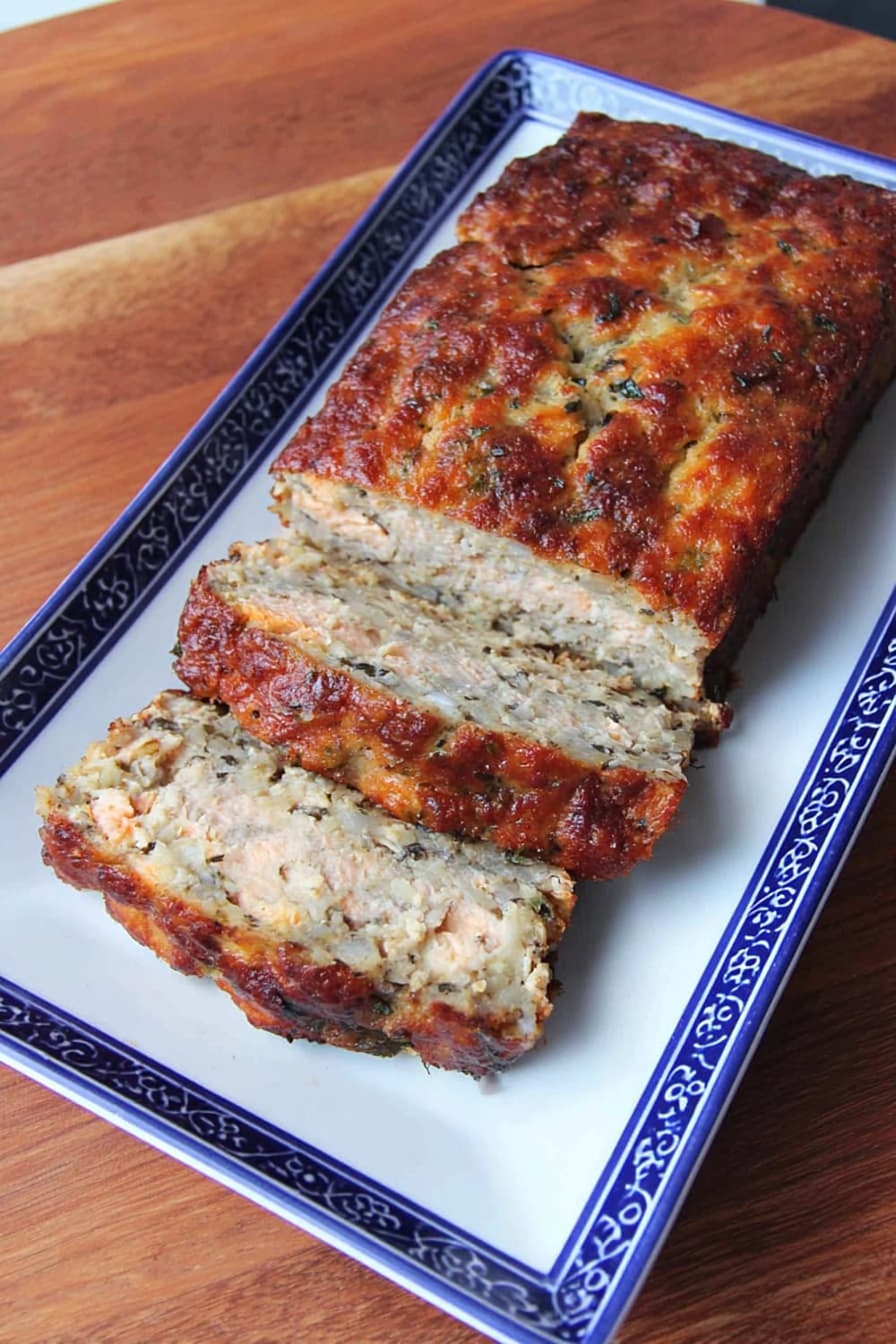
Make It Diabetes-Friendly
Carb Reduction Strategies:
- Replace saltine crackers with ¼ cup almond flour plus 2 tablespoons ground flaxseed for binding
- Use unsweetened almond milk instead of regular milk to reduce natural sugars
- Add extra vegetables like finely diced bell peppers or zucchini to increase volume without carbs
- Estimated carb reduction: From 8g to 3g per serving with these modifications
Enhanced Protein Options:
- Add 2 tablespoons cottage cheese for extra protein and creaminess without significant carbs
- Include 1 extra egg to boost protein content and improve binding
- Mix in 2 tablespoons chopped nuts for healthy fats and protein
Blood Sugar Management Tips:
- Serve with non-starchy vegetables like steamed broccoli or green salad to add fiber
- Pair with avocado slices for healthy monounsaturated fats that slow digestion
- Recommended serving size: ¼ of the loaf (about 3-inch slice) with vegetables
- Estimated net carbs: 2-3 grams per serving with modifications
Meal Timing Suggestions:
- Best served at lunch or dinner when paired with low-carb vegetables
- Include healthy fats like olive oil drizzle to further slow carb absorption

Perfect Pairing Suggestions
Beverage Pairings
White wines like Sauvignon Blanc or Pinot Grigio complement the salmon’s richness without overwhelming the delicate flavors. For beer lovers, a light lager or wheat beer provides refreshing contrast. Non-alcoholic options include sparkling water with lemon, iced green tea, or cucumber-infused water that cleanse the palate between bites.
Side Dish Recommendations
Roasted asparagus with garlic and lemon brightens the meal with fresh, crisp flavors that contrast beautifully with the loaf’s richness. Creamy mashed cauliflower or traditional mashed potatoes provide comforting starch that soaks up any accompanying sauce. Mixed green salad with vinaigrette dressing adds acidity and freshness, while roasted Brussels sprouts with bacon offer earthy, savory notes that complement the salmon.
Complete Meal Ideas
Start with a light soup like tomato basil or vegetable broth-based soup. Follow the salmon loaf with steamed green beans and herb-roasted potatoes. For dessert, keep it simple with fresh berries or lemon sorbet to cleanse the palate after the rich main course.
Occasion Suggestions
Perfect for Sunday family dinners, potluck gatherings, or casual entertaining when you want something homestyle but impressive. Excellent for meal prep since it reheats beautifully and travels well to office lunches or picnics.
Pro Tips and Troubleshooting
Professional Techniques
Don’t drain the salmon liquid – this is your secret to moisture and prevents dry, crumbly texture. Let the mixture rest for 5 minutes before baking to allow crackers to absorb liquid and swell properly. Press firmly into the pan to eliminate air pockets that cause cracking or falling apart when sliced.
Common Mistakes and Solutions
Loaf falls apart when slicing: Usually means not enough binding agent or mixture was too wet. Next time, add an extra tablespoon of crushed crackers or let mixture sit longer before baking. Dry texture: Often from draining the salmon or overbaking. Check doneness at 40 minutes and cover with foil if browning too quickly. Soggy bottom: Ensure your oven is fully preheated and consider placing the loaf pan on a baking sheet for better heat circulation.
Storage and Reheating
Refrigerate leftovers for up to 4 days wrapped tightly in plastic wrap. Reheat slices in a 350°F oven for 10-12 minutes or microwave for 30-45 seconds per slice. Freezing: Wrap cooled loaf in plastic wrap, then aluminum foil, and freeze up to 3 months. Thaw overnight in refrigerator before reheating.
Make-Ahead Strategy
Prepare mixture up to 24 hours ahead and refrigerate in the loaf pan covered with plastic wrap. Add 5-10 minutes to baking time if baking directly from cold. Double the recipe and freeze one loaf for future meals.
This salmon loaf proves that comfort food doesn’t have to be complicated to be absolutely delicious, and once you master this simple technique, you’ll find yourself making it again and again for family dinners, meal prep, and those times when you need something satisfying that practically makes itself.